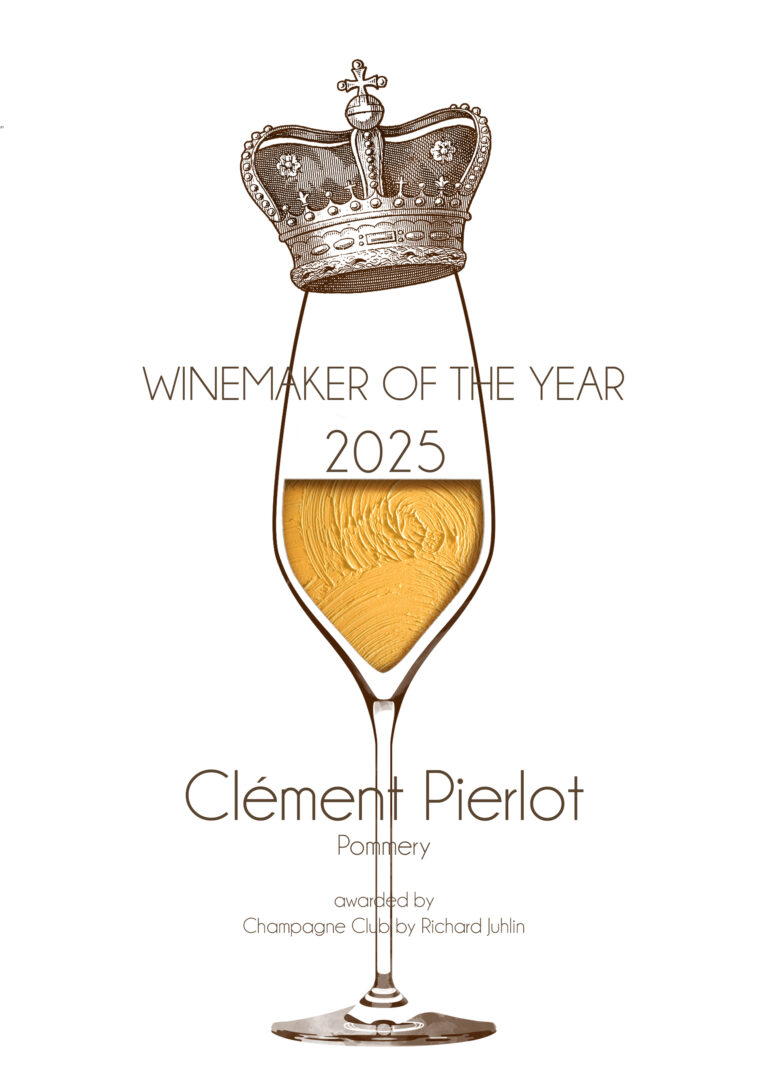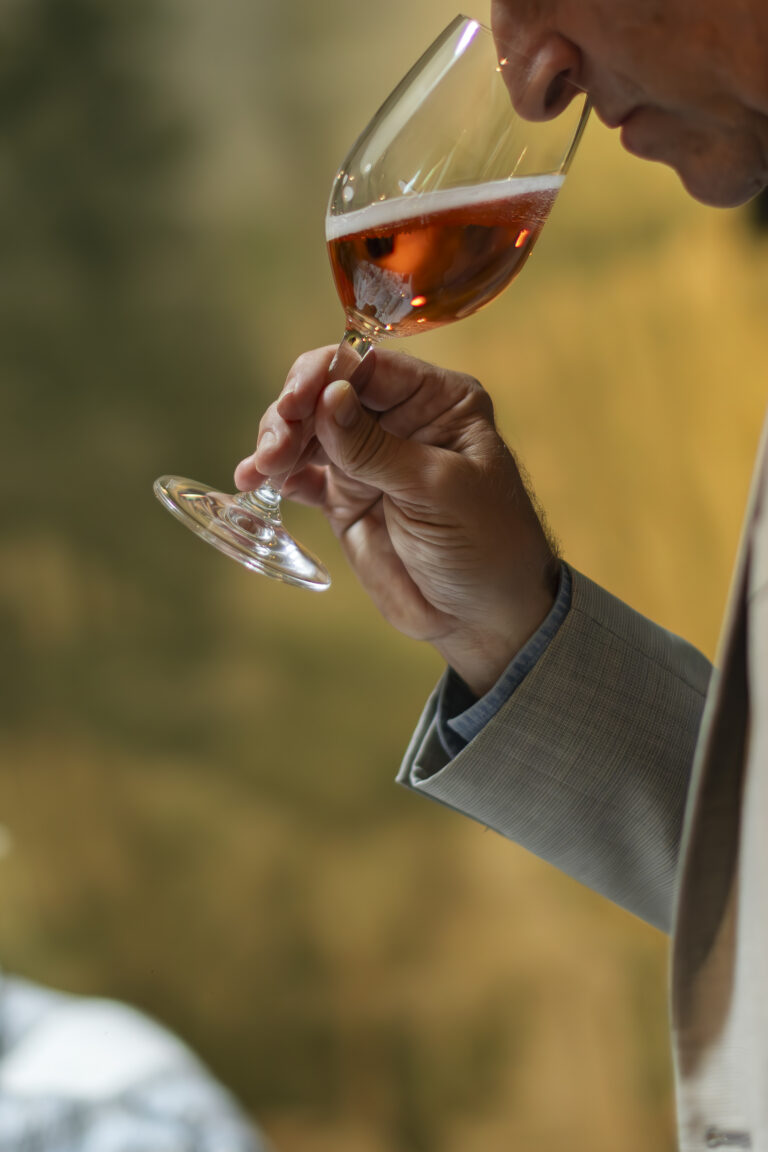Ah, August in Sweden. The Champagne Sommelier’s Guide to Kräftkalas. [ read the full champagne story ]
Estimated reading time: 8 minutes

Ah, August in Sweden. A month where the sun, having finally decided to grace the country with its presence, begins its slow, melancholic descent. But before the perpetual twilight of winter descends, there is one last, glorious hurrah. A tradition that is part pagan ritual, part organized chaos, and all a salty, dill-scented mess: the kräftkalas, or crayfish party.
As a champagne sommelier, my colleagues often ask me, “Isn’t it rather pedestrian? The bibs, the paper hats, the endless schnapps?” My dear fellow connoisseurs, you misunderstand. To dismiss the kräftkalas is to dismiss a crucial chapter in the Swedish soul. It is an unholy communion of class and kitsch, where the polite facade of Scandinavian society cracks, revealing a core of boisterous, slightly inebriated joy.


The Traditions: A Carnival of the Absurd
First, let us dispense with the aesthetics. The decor is, by and large, a triumph of the grotesque. Paper lanterns adorned with smiling moons, paper bibs that serve as a canvas for the glorious splatter of crayfish juice, and, of course, the conical paper hats. These hats are not a fashion statement; they are a declaration of surrender to the evening’s glorious silliness. To refuse one is to announce yourself as a joyless bore, a culinary Puritan. Don’t be that person.
The ritual itself is a masterclass in controlled gluttony. A massive pile of scarlet, brine-soaked crayfish is dumped onto a table. There are no plates, just a communal, edible mound. The crayfish, boiled in a brew of dill and saltwater, are consumed with a surgical precision that belies the festive atmosphere. You twist, you suck, you slurp. There are no rules of polite conversation when you have a piece of crayfish leg wedged between your front teeth.
The Food: A Briny, Dill-Infused Rhapsody
The main event, of course, is the crayfish. But the kräftkalas is not a one-note samba. The crayfish are accompanied by a supporting cast of culinary characters. Crusty bread, often a simple white loaf, is essential for mopping up the delicious dill-infused brine. A sharp Västerbottensost cheese, a magnificent, hard, crumbly cheese from the north, is served as a counterpoint to the crayfish’s saltiness. And then there are the side salads, often a simple, unpretentious affair, providing a fleeting moment of vegetable-based virtue before the next crayfish is torn asunder.
The Drinks: A Shot of Courage, a Sip of Class
Now, we come to the most critical part of the evening. The drinks. The traditional pairing, and a particularly Swedish one at that, is schnapps. The little shots of clear, potent liquor are consumed with gusto, often accompanied by a drinking song. The songs are a mandatory part of the ritual, a collective, boisterous, often off-key expression of joy. They are a social lubricant, ensuring that by the end of the evening, everyone is on a first-name basis with their neighbors, regardless of prior acquaintance.
But my dear reader, you are not just anyone. You are a person of taste, of refinement. To pair this glorious, salty mess with a shot of fiery liquor is to miss a spectacular opportunity for a more nuanced, and frankly, superior, experience.

The Champagne: A Sinner’s Salvation
This is where I, The Champagne Sommelier, come in. The crayfish, with its intense salinity and delicate sweetness, cries out for a partner of equal stature. Schnapps is a bludgeon; champagne is a foil. The effervescence of a good champagne cuts through the fat and salt, cleansing the palate and preparing it for the next glorious crustacean. The acidity provides a beautiful counterpoint to the sweetness of the crayfish meat, and the yeasty, brioche notes from a well-aged champagne complement the dill in a way that is nothing short of transcendent.
So, what to choose?
For the Traditionalist – Brut Nature or Extra Brut
A classic, bone-dry Brut Nature or Extra Brut. Look for a Blanc de Blancs from a good house. The pure, crisp citrus and mineral notes will sing in harmony with the salty crayfish. Think of it as a cleaner, more elegant version of the traditional schnapps. These are the purest expressions, the closest thing to a blank slate that Champagne can provide. They are all about the terroir, the tension, and the unapologetic acidity that will slice through dill and brine with the precision of a master’s knife.
- Laurent-Perrier Ultra Brut: A house known for its precision and elegance, Laurent-Perrier’s Ultra Brut is a masterpiece of low dosage. It is a Blanc de Blancs, meaning it is 100% Chardonnay, which gives it a steely, mineral core and notes of crisp green apple and citrus. It’s a clean, invigorating palate cleanser that will make the crayfish sing.
- Louis Roederer Brut Nature: An audacious, stunning collaboration with designer Philippe Starck. This is a Champagne that is both intellectually stimulating and a pure pleasure to drink. It’s rich and complex, with a texture that is both creamy and vibrant. The flavors are a beautiful tapestry of citrus, honeysuckle, and a subtle toastiness that comes from extended aging. It’s for the person who wants to be both in the moment and thinking about the artistry behind the bottle.
For the Connoisseur – Vintage Champagne
A vintage Champagne with a few years on it. The mature, nutty, and toasty notes of an older bottle will add a layer of complexity to the meal. It’s a pairing that says, “I understand the tradition, but I have a superior perspective.” A vintage Champagne is a story in a bottle, a snapshot of a single year’s harvest. These are for those who appreciate the patina of age, the nuance that comes from patience.
- Dom Pérignon: While its name may be ubiquitous, its quality is never in question. Dom Pérignon is the epitome of prestige. The specific vintage you choose will dictate the experience, but they are consistently defined by their notes of toasted brioche, coffee, and a powerful, yet elegant, structure. It is a Champagne of profound depth that elevates the entire meal into a grand occasion.
- Bollinger La Grande Année: Bollinger is a house that champions Pinot Noir, and their vintage expression, La Grande Année, is a testament to that. Aged entirely in oak barrels, it offers a rich, full-bodied, and nutty profile that is utterly seductive. It’s a Champagne of immense character, with notes of dried apricot, spice, and a yeasty complexity that will stand up to the most robust crayfish.
For the Rebel – Rosé Champagne
A Rosé Champagne. The red fruit notes—strawberry, cherry, raspberry—of a good rosé, particularly one with a touch of Pinot Noir, can provide a beautiful contrast to the savory brine. It’s an unexpected pairing, and all the better for it. It says you are not afraid to color outside the lines. Rosé Champagne has shed its frivolous image and, in the right hands, can be a serious wine of remarkable complexity. These recommendations are for those who are not afraid of a little color and a lot of flavor.
- Billecart-Salmon Brut Rosé: This is the non-vintage standard-bearer for rosé. Known for its pale salmon hue and a delicate, almost ethereal quality, it is a masterclass in finesse. The notes of wild strawberry and raspberry are a perfect foil for the sweetness of the crayfish meat, and its fine, persistent mousse is pure elegance. It’s the rebel who has perfected their craft.
- Louis Roederer Rosé Vintage: A vintage rosé from Louis Roederer is a different beast entirely. It’s a Pinot Noir-dominant wine with a profound character and structure. It’s a wine of vibrant red fruit, but with a serious, vinous core and a beautiful mineral tension. It’s the sort of rosé that makes a statement, a bold and beautiful pairing that tells everyone at the table that you know exactly what you’re doing.
So, this August, as you don your paper hat and prepare to embark on this beautiful, messy, and quintessentially Swedish tradition, do not forget the most important ingredient. Pass the schnapps if you must, for tradition’s sake. But for the sake of your palate, and your soul, make sure there is a good bottle of champagne chilling in the ice bucket. It is the only thing that can elevate a salty, red mess into a truly civilized affair. Skål!






